20th Anniversary Issue: The 1990s
ASAs: Asia-Pacific stands up to U.S. ‘bully boys’
October 1st 2013
Renegotiating outdated and unbalanced bilateral air service agreements (ASAs) between Asia-Pacific carriers and the U.S. dominated the region’s aero-political debates in the 1990s. Read More »
It was a controversial issue. The ASAs were heavily weighted in favour of the U.S. and the American “bully boy” negotiators were determined to maintain the advantage in a market where six of the ten most profitable airlines in the world were based.
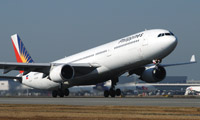 |
| Philippine Airlines: accused its government of selling out to the U.S. over cargo flights |
With no inclination to understand the Asia-Pacific airline perspective, let alone demonstrate a culturally sensitive approach to the heated discussions, the Americans reacted with indignation in 1994, when the Orient Airlines Association (OAA) called for the balance to be redressed. The OAA was the forerunner of the Association of Asia-Pacific Airlines (AAPA).
Cathay Pacific Airways’ managing director and chairman of the OAA’s aero-political committee, Rod Eddington, accused the U.S. of “talking one game and playing another”.
Of particular contention was the access the U.S. had to Japan, based on a bilateral agreement signed between the two countries in 1952. In early post-war Japan, the country’s travel market was very small and the U.S. was an economic powerhouse. By 1994, Japanese travellers to the U.S. outnumbered American visitors to Japan by six to one. Yet U.S. carriers held 70% of the U.S.-Japan market and occupied 30% of slots at Tokyo’s congested Narita Airport.
Fifth freedom rights also were an issue. Nearly 40% of U.S. carriers’ flights to OAA member countries were fifth freedom services. In Japan’s case, it was claimed by Japan Airlines (JAL) that U.S. airlines carried more passengers from Japan than they flew to third countries from the U.S.
Times have changed dramatically from those controversial days 19 years ago. One of the main U.S. culprits, Northwest Airlines, has since been merged with Delta Air Lines. And new technology has meant that long-haul aircraft can fly greater distances point-to-point which has reduced fifth freedom services.
In 1995, the then U.S. Secretary for Transportation, Federico Pena, denied to Orient Aviation that there were ASA imbalances in the Asia-Pacific. Executives at Philippine Airlines (PAL) did not agree after they learnt their government had contracted with the U.S. to increase the number of cargo operators in the country from one to four and allow U.S. airlines to substitute passenger flights for cargo. It was “a sellout”, said PAL. The ensuing outrage forced the U.S. to delay implementation of the ASA in return for more passenger access on U.S.- Philippines routes.
Unexpectedly, in 1996, it was Thailand who negotiated the “big thaw” in the agonizing dialogue with the U.S. The fast-growing Southeast Asian hub had frozen its bilateral agreement with the U.S. five years earlier, but was anxious to strike a new deal.
The talks were labelled a “compromise” by some and “a good deal” by others for Thailand. Hong Kong, China and the Philippines managed to gain some ground with the U.S. in the same year, but the agreements remained heavily weighted in favour of the Americans, particularly with beyond rights and cargo.
Said Eddington: “After a number of years of gridlock there has been a series of agreements in the past six months. I feel there has been a fundamental change in the U.S. I think they now have a better understanding [of the situation].”
Dominoes continued to fall. In 1997, Singapore, Brunei, Taiwan, New Zealand and Malaysia concluded open skies agreements with the U.S. Hong Kong and South Korea had begun negotiations with Washington and Australia, Thailand, the Philippines and Indonesia were on America’s ASA radar.
The revised ASAs provided substantial increases in capacity and frequency as well as multiple designations, with a gradual phasing in of expanded traffic.
The following year, the U.S. and Japan finally signed a new air transport agreement, a South Korea- U.S. Skies deal was struck and Washington was in talks with China on a similar agreement. By 2000, China was re-writing its own bilaterals that would double flights between the Mainland and several Asian nations.
At the same time, the battles for expanded air rights had turned inward to the region. The Philippines government attacked Taiwanese carriers, China Airlines and EVA Air, for poaching sixth freedom traffic from the Philippines to the U.S. through Taiwan. An impasse developed when PAL demanded the two carriers reduce their combined weekly passenger capacity to 3,600 seats from 9,600, with Taiwan counter claiming at least 6,500. After a failed truce that held until late in 2000, Taiwan compromised with a seat capacity of 4,800 a week.
1993
Nowhere to be seen in the Orient Aviation annals of 1993 and 1994 were the words low-cost carriers. Tony Fernandes and AirAsia were yet to change the landscape of Asia-Pacific aviation.
1994
Cathay Pacific took a 75% stake in struggling cargo carrier, Air Hong Kong (AHK). China Southern Airlines (CSA) had expressed interest in buying 49% in AHK, but Cathay beat it to the punch. Today, the carrier is thriving.
SIA made the largest ever order for an Asian carrier – 21 aircraft, comprising 11 B747-400s and 10 A340Es with 31 options. Better was to come in 1995.
In April, a couple of paragraphs appeared in Orient Aviation announcing that Malaysia’s “second national airline, AirAsia, is expected to be in the air by October and to fly international routes not served by flag carrier, Malaysia Airlines”. Note: still no mention of the words low-cost.
1995
The Asia-Pacific was investing hundreds of millions of dollars in new airports and the upgrading of many others.
Nowhere more so than in the Pearl River Delta. In Hong Kong, major hills were being flattened and the world’s largest fleet of dredgers was occupied reclaiming land for the new international airport at Chek Lap Kok.
A one-hour ferry ride away from Hong Kong is Macau where test flights were up and running at its new airport. Another new airport, only a stone’s throw from Macau, in Zhuhai, Southern China, had been scheduled to open in March, but, after much trouble, was delayed until further notice.
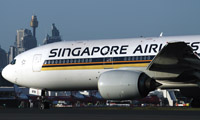 |
| Singapore Airlines: ordered 77 B777s in 1995, a record order for Asia at the time |
Meanwhile, in Shenzhen, just across the border from Hong Kong in southern China, its three-year-old airport was to undergo a comprehensive expansion programme after reporting an average growth of 20% a year. In Guangzhou, work was about to start on the new Baiyun International Airport, the fifth airport development in the Pearl River Delta and the third in southern China.
Eighteen years ago, Cathay Pacific was challenging an application for an air operator’s certificate (AOC) by the Mainland’s China National Aviation Company (CNAC), the commercial arm of the Civil Aviation Administration of China (CAAC), for a Hong Kong start-up carrier of the same name. It claimed Hong Kong was not CNAC’s principle place of business as is required by the Special Administrative Region’s Basic Law.
CNAC was already operating charter services into what was still a British colony. The move by CNAC was seen as a challenge by Beijing as the handover neared.
Today, it’s déjà vu as Cathay Pacific challenges Jetstar Hong Kong’s application for an AOC for the same objection.
With great fanfare SIA announced an order for 77 B777s – 34 firm and 43 options – a deal worth US$12.7 billion. The contract exceeded its record order of 18 months earlier for 52 orders and options. SIA also signed a Trent 800 engine contract with Rolls-Royce worth $1.2 billion.
The B777 order was Boeing’s largest ever widebody deal and was for more planes than SIA had in its entire fleet (69).
1996
The Asia-Pacific juggernaut was increasing momentum. Within weeks of SIA announcing an order for 77 B777s, Malaysia Airlines (MAS) said it would invest in 25 long-haul aircraft, PAL ordered 32 new jets and China Airlines (CAL) six B737-800s, as Asia’s launch customer, with nine options. Korean Air (KAL) said it wanted to add 30 new aircraft to its fleet by 2000.
Tobacco and brewery tycoon, Lucio Tan, was being hailed as PAL’s saviour after he invested $412 million in the carrier to take a 67% stake. He took over the heavily loss-making airline from government interests after a long and bitter boardroom battle.
Airline president and CEO, Jose Garcia, said Tan’s involvement was PAL’s “last chance”. The injection of new capital, he said, would play a major part in the carrier’s re-fleeting, which was critical to PAL’s future success.
There was an air of mystery about the Mainland-owned, Hong Kong-based carrier, CNAC, which was to be renamed China Hongkong Airlines. It had planes, a Hong Kong office and had recruited staff. The only thing it did not have was a service from its Hong Kong base.
The general consensus was that, just months before the 1997 handover of Hong Kong to the Mainland, the bottom line was politics.
Two months later, the cloud was lifted. The airline was shelved without carrying a passenger. But what CNAC did receive was a 36% stake in Cathay subsidiary, Dragonair, for what was described as a “sweetheart deal” of $252 million.
Parent company, Swire, and Cathay reduced their shareholdings by 18% to make way for CNAC. The shake-up meant that Dragonair was now 64% owned by Mainland interests.
Facing mounting competition from inside and outside Thailand, the president of Thai Airways International (THAI), Thamnoon Wanglee, called on the government to sped up privatization of the airline. Thamnoon and subsequent presidents are still waiting.
An “incredible” increase in cabin violence was being linked to the global move to ban smoking on aircraft. “This is a far bigger subject than we really understand at the moment,” said Ken Lewis of Qantas Airways.
1997
Still no mention of the words low-cost carriers in the Asia-Pacific, but in 1997 a number of “young gun” airlines were challenging the traditional roles of national carriers in the region.
Carriers like Cebu Air, in the Philippines, Bangkok Airways, in Thailand and Skymark Airlines, in Japan, were described by Orient Aviation as “brash and ambitious start-ups bent on expansion with little respect for the rights of the traditional incumbents.
“Most of them are still small fish … but there is little doubt that some of them will emerge in the next decade as real competition for the big airlines, which have dominated the region’s air routes for years,” said the magazine.
Airport authorities in the region were being tested by sit-in protests, in particular by Taiwanese and Korean passengers. There were 20 such cases in Taiwan in 1996. Passengers protested against delayed or cancelled flights in the hope they would be given cash compensation.
Seventeen years on, this problem is becoming more prevalent in China.
Taiwan’s Legislative Assembly changed its civil aviation law to outlaw passenger sit-ins on aircraft. The new law allows police to board the aircraft and break up the demonstrations.
Orient Aviation presented its inaugural Person of the Year award to CAL’s CEO, Fu Chun-Fan.
1998
Not a good year for the Asia-Pacific. Starting last year, and continuing into 1998, the Asia-Pacific’s carriers were enduring their worst downturn since the 1991 Gulf War. This time is was Asia’s currency meltdown, which had started in Thailand, and spread through most of the region.
PAL was the worst affected, although not just by the currency crisis. It was in the midst of a $3.2 billion fleet modernization programme. In 1997, the carrier had re-launched itself as “Asia’s Sunniest” airline. But the downturn and other self-harming events knocked the smile off PAL’s face during the year.
“As of now our survival is on a day-to-day basis,” said president, Jose Garcia. “PAL is like a sick man, he must swallow bitter medicine.” The carrier went into receivership.
For years PAL had suffered from mismanagement, corruption and cronyism, but in September its back was broken by misguided strikes, particularly by its pilots. It closed its doors on September 23 … but re-opened them 10 days later, on a limited basis after intervention by the country’s president, Joseph Estrada.
Cathay Pacific was helping out on PAL’s most popular routes, but, more importantly, behind the scenes it was negotiating to buy a 40% stake in the failed carrier. The deal collapsed because PAL would not agree to Cathay’s demands that it manage the carrier and reduce staff from 8,000 to 5,000.
Cathay Pacific was hit hard during the downturn and laid-off 760 people, as were airlines in Malaysia, Korea, Japan and Indonesia. A number of the region’s carriers sought to sell aircraft and delayed fleet orders.
Heavily indebted Garuda Indonesia was another carrier which had suffered from years of corruption and cronyism under the country’s President Suharto. Three thousand loyal staff, however, decided it was time for change and after a major peaceful demonstration their voices were heard.
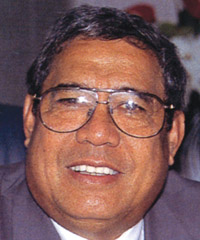 |
| Garuda Indonesia chief executive, Robby Djohan: got rid of the “bad guys” in 1998 |
Airline president Soepandi was shown the door and a 57-year-old banker, Robby Djohan, agreed to take over the hot seat at Garuda. He told Orient Aviation, in an exclusive interview on his first day in office, that he would have preferred to continue riding his Harley Davidson motor cycle. “But someone has to care about this country and I do,” he said.
In June, Djohan took the job and refused payment. He vowed to rid Garuda of the “bad guys”. In the coming months, he had a clear out, sacking staff and contractors, many of them linked to the Suharto family.
Garuda had a new-found stability and, what’s more, recorded an operating profit in August. Djohan handed the reins over to another banker, Abdulgani, later in the year.
Facing tough economic conditions, airlines were paying more attention to the infant global alliances. Star Alliance in 1998 had but six members, United Airlines, Lufthansa, THAI, Varig, SAS and Air Canada.
The newly-named oneworld had American Airlines, British Airways, Cathay Pacific, Qantas Airways and Canadian International Airlines on board. Skyteam, also unnamed at this point, had Delta Air Lines and China Southern Airlines signed up. At this stage, there was a fourth grouping comprising of Continental Airlines, Northwest Airlines and KLM, which eventually joined forces with Skyteam.
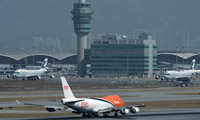 |
| Hong Kong International Airport: computer chaos in its first days in July, 1998 |
There were celebrations mid-year when two new airports opened. Kuala Lumpur won the race for line honours on June 29. Eight days later, one of the world’s largest modern day engineering projects, the new Hong Kong International Airport at Chek Lap Kok, took off.
The events were not without their problems, however, with both airports suffering immediate serious computer glitches that caused early passenger and cargo chaos.
SIA announced it had a “war chest” of up to $1.2 billion in cash reserves, which could be used to take equity stakes in foreign carriers. It was part of SIA’s strategic plan to build its own global group of airlines and airline-related companies.
Carriers said to be on its shopping list were CAL, THAI, Air New Zealand, Ansett, Air India and South African Airways.
Jobs, spare parts, recipes, cargo tracking, travel guides, tendering. Asia-Pacific airlines were now wooing clients on the Internet, wrote Orient Aviation. Who could have possibly foretold the technology advances in the industry that were to be made in the next 15 years?
As the year drew to a close, delegates at the AAPA’s Assembly of Presidents heard that losses in 1997-98 were $843.8 million, down 176% on the previous year. It was a miserable end to a miserable year.
1999
The aviation industry in the Asia-Pacific was on the mend. Many carriers had taken the toughest decisions in their history to combat the 1998 recession. They were to stand them in good stead in the years ahead.
Orient Aviation conducted a survey among chief executives asking what steps they had taken and what the future had in store for the industry.
Many had made widespread staff cuts. Greater emphasis was being placed on information technology. There was to be more conservative capacity growth.
Alliances were being more readily accepted than before the downturn. Meanwhile, CEOs felt the days of big yields had gone for ever with greater efficiency necessary to compensate.
The recession had brought change. The Asia-Pacific aviation industry was sleeker, more open and more vibrant than 12 months earlier.
Things started to look up for PAL in the new year. It started nervously with majority investor, Lucio Tan, resigning as president, but remaining chairman.
Five ex-Cathay Pacific managers joined the carrier, led by Peter Foster (now CEO of Air Astana), to help PAL through its rehabilitation and pay its $2.25 billion debt.
The scale of the task could be gauged by the fact they were all accompanied by armed bodyguards. However, the ‘A-team’, hired to perform “a five-year miracle”, fell out with Tan and were on their way back to Hong Kong by September.
During the year, PAL reduced its fleet from 54 aircraft to 22, slashed routes and staff and sold off non-core businesses. In the six months to September 30 it recorded a net profit of $811,000, compared with a $137.7 million loss a year earlier.
Cathay was having trouble with its pilots. Between 40 and 50 a day were reporting sick, claiming to have stress-related illnesses induced by a pay dispute. More than 600 flights had to be cancelled.
Cathay decided to charter aircraft from other airlines, including four major Mainland carriers, plus JAL, Malaysia Airlines and Vietnam Airlines.
SIA’s attempt to build its own global alliance was coming unstuck. Its bid for a 50% stake in Ansett fell through when Rupert Murdoch’s News Corp withdrew from the $326 million deal. It said the reason was SIA’s failure to resolve its differences with Air New Zealand, which owned the other 50%.
Meanwhile, SIA’s hopes of taking a stake in CAL failed when the carriers could not agree on the extent of SIA’s management control. Days before the Ansett disappointment, SIA announced it had withdrawn from bidding for a share in South African Airways.
| So why all the fuss? If dealing with a recession wasn’t bad enough, in 1998 Asia-Pacific airlines were also having to gear up for the new millennium and the much feared millennium bug. IATA estimated airlines alone would need to spend $1.6 billion to become Year 2000 (Y2K) compliant, with a number of airline giants facing bills of up to $100 million for protection. Aircraft manufacturers and civil aviation authorities also were thought to be at risk. The fear was that as the clocked ticked down to 2000 on New Year’s Eve, for the non-compliant the 00 in the date 2000 would bring their computers to a grinding halt. But cometh the day, cometh the hour and the big question was: why all the fuss? After a couple of years or more of hard work and millions of dollars spent, Y2K was nothing more than a super expensive non-event. However, it spoilt the New Year celebrations of many CEOs and their lieutenants as they were either on board planes to reassure passengers their operations were safe or bunkered down awaiting news of a technological mayhem that never came. |
2000
In April, SIA acquired 16.7% of Air NZ, which took its stake in the carrier to 25%.
It may be hard to realize today, when the air freight market is in the doldrums, but in 2000 Hong Kong, Singapore, Japan, Taiwan, Malaysia, South Korea and the Philippines were running the risk of a major regional hub war as airports and flag carriers battled for domination of the booming Asia-Pacific freight markets. Cathay was looking at establishing its own regional freighter fleet.
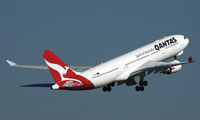 |
| Qantas Airways: became the second A380 customer when it ordered 12 of what was known as the A3XX in 2000 |
Airlines were buying more freighters to back up their home hubs, including an order for 13 B747-400Fs by CAL. Carriers were starting to convert more passenger planes to freighters.
In September, SIA became the launch customer for the A380, then known as the A3XX, when it confirmed an order for 10 of the aircraft, with six options, for further “passenger and/or freighter versions”. Qantas Airways ordered 12 A380s in November as part of an order of 31 new aircraft, valued at $4.6 billion, from Airbus and Boeing.
JAL became the first airline to order the longer range B777-300 aircraft. It ordered eight of the jets. Cathay Pacific, EVA Air, All Nippon Airways (ANA), KAL and Garuda Indonesia all made substantial orders for new aircraft in what was a bumper year for the aircraft manufacturers.
However, fuel was the party pooper as rapidly escalating fuel prices were causing concern for the industry during the year.
Cathay Pacific pioneered the first polar flight with one of its A340-300s. The flight, between Toronto and Hong Kong, with 127 passengers and 16 crew on board, took 14 hours and 59 minutes. It saved three hours on the route, which normally included a technical stop at Anchorage.
Sign of the IT times …. in November, Cathay Pacific announced it would invest $256.4 million in more than 30 e-business projects in the next three years. SIA said it would spend $57 million to streamline its group business operations into one e-business platform.
2001
September 11, 2001 … as our headline read in Orient Aviation’s year end review for the year “The day the world changed”. The hijacking of three U.S. airliners by terrorists who flew two of them into the Twin Towers in New York and the third into the Pentagon in Washington cost 3,000 lives and changed aviation forever.
The immediate effect was people chose not to fly; a great concern for the Asia-Pacific and the global aviation industry. While some carriers were reporting an immediate major hit on ticket sales, the main focus was on safety and security.
War-risk insurance cover was causing major problems for the airlines. Facing hikes of between 100% and 200%, many were relying on government guarantees to keep them in the air because of the danger of being grounded by lessors and airports over inadequate cover.
Thailand’s prime minister, Thaksin Shinawatra, initially believed an explosion on a THAI B737 he was about to board in Bangkok for a domestic flight, was an assassination attempt on himself. He even said he knew who was responsible.
The explosion killed one person and injured seven others. But a report by the U.S. National Transportation Safety Board revealed it was an accident, the result of two air conditioning units, positioned under a central fuel tank, overheating.
In March, PAL celebrated its 60th anniversary. Few would have thought of seeing the day. Three years earlier, crippled by debt and staff discontent, the airline closed its doors for a short time. But it bounced back, paid off its $2.3 billion debt and exited rehabilitation.
South Korea’s Incheon International Airport opened in late March.
In September, Ansett Australia, wholly-owned by AirNZ, closed its doors. It had 16,000 staff and a fleet of 66 aircraft. It resumed business a few weeks later, under new management, but as a shadow of its former self and still with its future on a knife edge.
The news of the initial demise of the 65-year-old carrier came 36 hours after AirNZ had announced the biggest yearly corporate loss in New Zealand history - $612.8 million. Ansett, with debts of $1 billion, had contributed most to AirNZ’s loss.
The decision to close Ansett was taken to protect AirNZ from further exposure to the airline’s growing debt. The New Zealand government stepped in to stop its national airline’s financial collapse with a $368.75 million rescue package.
But events took their toll on AirNZ. Casualties included CEO, Gary Toomey, who resigned after just 10 months in the job, and the departure of chairman, Selwyn Cushing.
Japan Airlines celebrated its 50th anniversary in October.
MAS chairman, Tan Sri Azizan Zainul Abidin, fired an unprecedented broadside at the carrier’s previous management when he said it had fostered a work culture of “abuse, plunder of the company for personal gain, high-cost, inefficiency and has driven the company to near bankruptcy”.
The comments were directed at the legacy of the previous chairman and majority shareholder, Tajudin Ramli, who sold his MAS shareholding back to the government earlier in the year. Azizan said the company had been on the verge of collapse.
His remarks to staff came as he launched a recovery programme, Together We Can Make It. “MAS would now review its procedures to plug the “rampant leakages and stop the haemorrhaging to protect it from predators”, he said.
2002
The bid to resurrect Ansett Australia fell on stony ground with Ansett Mark 11, launched a few weeks after the initial closure, making its final flight in March. The original airline had 16,000 staff when it closed its doors. When the final curtain fell the “reincarnated” carrier had only 1,400 workers.
Ansett’s fate was sealed when talks broke down between prospective saviours, Solomon Lew and Lindsay Fox, and the airline’s administrators.
Japan Airlines and Japan Air System were preparing for their merger during the year.
Less than 12 months after 9/11, the Asia-Pacific reported it was recovering faster than any other region in the world. No boom – some capacity remained grounded, yields were low and cargo was a concern – but all carriers reported better than the predicted massive losses of a year ago. Traffic was expected to reach pre-9/11 levels by August.
A look at the financial headlines in September reflect this: Strong first half for Cathay Pacific; Korean Air back in the black; Asiana follows suit; First quarter record for PAL; Hainan expanding at a pace. In the same issue: Tonnes of optimism – Asia’s air cargo market is exceeding all expectations.
All flights suspended after 9/11 were now flying again. Many airlines had started new routes, many of them into China.
Australia Airlines, the first medium-haul, low-cost airline was preparing for an October launch. The Qantas subsidiary would be operating on its parent’s loss-making routes.
China Southern Airlines introduced special services for thousands of foreign parents seeking to adopt children born in China.
Low-cost carrier, AirAsia, had yet to complete its first year in service, but it was making $264,000 a month, according to boss Tony Fernandes. The airline had carried 800,000 passengers.
One could not help but feel sorry for Garuda Indonesia. Having struggled to recover from the aftermath of 9/11, its prime domestic destination of Bali was rocked by terrorist bombs in October which blew up a nightclub and a bar killing more than 200 tourists and local people.
Some 70% of international passengers carried by Garuda were on package holidays to Bali. Bookings were decimated.
JAL and Japan Air System were officially merged on October 1, making JAL third in the world in terms of market capitalization and sixth in terms of traffic carried.
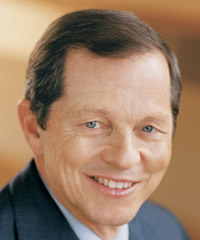 Giovanni Bisignani was appointed director general of IATA. He quickly promised a greater focus on Asia. “IATA must place priority where the needs are and that means greater activity in Asia because development is faster here,” he said. Giovanni Bisignani was appointed director general of IATA. He quickly promised a greater focus on Asia. “IATA must place priority where the needs are and that means greater activity in Asia because development is faster here,” he said.His priorities, he said, were to negotiate lower airport user charges in the face of massive industry losses, to see improved cross-border cooperation in air traffic control as well as broader liberalization throughout the industry. One of his first jobs was to tackle the Narita Airport Authority, in Tokyo, which was hoping to increase already sky-high landing charges at Narita airport by 8.3% “during a period of unprecedented strain” for the airlines. There was also speculation that Narita was looking to prop up the struggling new Kansai airport. |
2003
MAS became the third Asia-Pacific carrier to order the A380. It ordered six with four options.
Airlines in the Asia-Pacific were steeling themselves for repercussions on business following the outbreak of the Iraq War. An Orient Aviation survey revealed they depended on four factors: how long the war would last, oil prices, insurance costs and traffic downturn.
The scourge of SARS The Iraq War broke out in March 2003. Just when airlines thought it couldn’t get any worse it did! SARS (Severe Acute Respiratory Syndrome) broke out in Hong Kong. It had reached epidemic proportions and was spreading beyond its shores by April. The Iraq War broke out in March 2003. Just when airlines thought it couldn’t get any worse it did! SARS (Severe Acute Respiratory Syndrome) broke out in Hong Kong. It had reached epidemic proportions and was spreading beyond its shores by April.“The spread of SARS has created the worst ever situation faced by the airlines of the Asia-Pacific region,” said the AAPA director general, Richard Stirland. Cathay Pacific Airways CEO, David Turnbull, said its passenger traffic had been “annihilated”. The Hong Kong-based airline, situated at the geographical centre of the SARS outbreak, was entering its most dangerous time in terms of its commercial future in his 26 years with the company, he added. At the height of the outbreak Cathay was estimated to be losing $3 million a day with passenger loads down 75% on a year earlier. Hong Kong’s second carrier, Dragonair, which focused mainly on Mainland China routes, was losing $500,000 a day with passenger numbers slumping to 700-800 daily, from normal loads of 10,000 to 13,000. Some flights carried less than 10 passengers. SIA CEO, Dr Cheong Choong Kong, told staff SARS was inflicting more damage on the carrier’s bottom line than the Iraq War. In total, thousands of flights were cancelled region-wide. No airline was spared. Many thousands of workers were laid off. By June, there were signs the disease was on the wane, but not before the Asia-Pacific airline industry had lost an estimated $1.2 billion. The World Health Organisation lifted travel advisories against most countries and those worse affected, like Hong Kong and Singapore, were being considered. Although SARS was diminishing, the disease was still taking its toll on the airline industry. SIA laid off 414 staff, its largest retrenchment since its formation in 1972. It was a necessary step to save the company, said the carrier’s new CEO, Chew Choon Seng, and more could follow. SIA passenger numbers had halved. It was forced to reduce capacity by a third. At the height of the outbreak, SIA was losing $3.4 million a day. Senior management took pay cuts of 23% to 28%. However, airlines were predicting a return to pre-crisis traffic levels by the end of September. Helped by heavy ticket discounts, there was a surge in bookings in July and August. By year end, the mood was changing. In December, Cathay boss Turnbull said: “What we have all learnt is how amazingly quickly the travel industry bounces back.” And just for good measure, Cathay was in the market with plans to add 15 B747-400s to its fleet. |
2004
Budget carrier blitz. It was forecast that 20 new LCCs could take to the air this year in the Asia-Pacific with SIA, THAI and Qantas deciding that if you cannot beat the upstarts, then join them. China also gave its blessing to the formation of LCCs on the Mainland.
In April, ANA became the launch customer of what was then the 7E7 and today is known as the B787 Dreamliner, with an order for 55 of the aircraft.
Taiwan’s small regional carriers were experiencing heavy losses on domestic routes as they lost out to road transport. Worse was to come with the launch of the bullet train, scheduled for 2005.
Andrew Herdman was appointed the new director general of the AAPA.
Cargo was booming and had provided a lifeline to airlines during the aftermath of 9/11 and the SARS crisis.
| 'Airlines across the region have imposed a surcharge of between $5-$6 per sector as fuel prices surged to $46 per barrel at one stage, the highest level in 16 years' |
| Orient Aviation June 2004 |
Cargo as a percentage of CAL’s total revenue had risen from 35.8% in 2001 to 48.8% in 2003. Annual growth was almost 17%. Cargo soared 20.9% in the first quarter of the year for CAL.
The carrier was planning to add seven B747-400 freighters to its fleet. Its Taiwan rival, EVA Air, had already reached its goal of cargo comprising 50% of the airline’s revenue and was pushing for 60%.
The good news spread throughout the Asia-Pacific cargo market. Cathay was talking about converting six, and as many as 12, B747 passenger planes to freighters. MAS was expecting its cargo capacity to increase 30% by 2005. Seoul’s Incheon airport was reporting “explosive growth” with 20.3% more cargo from January through May year-on-year.
After a delay of six weeks, Guangzhou’s New Baiyun International Airport, in southern China, had a trouble-free opening in August.
Cathay Pacific announced it was going to take a 9.9% stake in Air China. CEO David Turnbull said it was “just the start” of a much bigger relationship between the two carriers.
SIA sold its 6.3% equity stake in AirNZ for $41.3 million. The Singapore carrier had bought 25% of the carrier in 2000, but this was reduced to 6.3% following a $520 million government bail-out of AirNZ in 2002 as it neared collapse.
Asian carriers were praised for their prompt action in aiding relief and rescue work following the tsunami that ravaged nations on the shores of the Indian Ocean on December 26. Almost 200,000 people died.
JAL ordered 30 B787 Dreamliners with 30 options in a deal worth $3.7 billion.
2005
French president, Jacques Chirac, and British Prime Minister, Tony Blair, were among the VIPs in Toulouse for the roll out of the A380.
Despite soaring fuel prices, the devastating effects of SARS and the Indian Ocean tsunami, the AAPA was reporting boom times for its carriers in 2005 as they carried more passengers and cargo than ever. Orders for new aircraft rocketed.
China Southern Airlines became the first Chinese carrier to order the A380. China signed a $7.2 billion deal for 60 B787 Dreamliners.
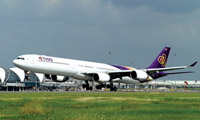 |
| The first plane touches down at Bangkok’s Suvarnabhumi International Airport in 2005 with prime minister, Thaksin Shinawatra, on board. It opening officially the following year |
THAI ordered six B777-200ERs while SIA ordered up to 31 of the same aircraft, a deal potentially worth $5.5 billion. In February, Boeing’s B777-200 Long Range model was rolled out.
In July, Orient Aviation reported that open skies were boosting a cargo boom, particularly in China. But prophetically it asked: “Is the growth sustainable or will over-capacity eventually leave airlines with too much cargo space and not enough goods to carry?”
Fuel was continuing to create concern throughout the Asia-Pacific region. As many of the region’s carriers raised their fuel surcharges again, the fuel price hit a peak of $90 a barrel. They were tipped to rise.
The launch of Hong Kong’s new long-haul LCC, Oasis Hong Kong Airlines, was postponed for at least four months as objections from competitors about aircraft and routes made a November start impossible.
The much delayed Suvarnabhumi International Airport in Bangkok welcomed its first two planes in September – and then closed again. The Thai prime minister, Thaksin Shinawatra, travelled on one of the THAI aircraft. Having vowed months earlier it would open in September, he was determined the airport would have, at least, a soft opening on that date.
Officially, the opening was now set for June, but others said the ‘real’ opening could be more than a year away, threatening its world hub status.
2006
There was speculation at the beginning of the year about the threat expanding carriers in the Gulf states were posing to airlines in the region. Carriers were concerned, but Emirates Airline boss, Tim Clark, commented: “We are no threat.”
After four months as managing director of MAS, Idris Jala said in March: “On current business assumptions, course and speed, we will surely fail unless we radically change the way we do business.” He said MAS needed to invest $1 billion in restructuring the business.
In May, MAS announced it would shed between 3,000 and 5,000 of its 23,000 workforce.
PAL reported that eight years after it entered receivership, it was in profit, its debts had been halved and expansion was the order of the day.
Qantas announced it was to close its loss-making leisure subsidiary, Australian Airlines, in mid-year. It would expand its domestic carrier, Jetstar, and accelerate the launch of its long-haul international low-cost airline, Jetstar International.
Airbus selected Tianjin as the site for its China A320 Final Assembly Line. Scheduled to open in 2008, it was expected to be assembling up to four A320s a month by 2010.
Cathay Pacific celebrated its 60th anniversary and took delivery of its 100th aircraft.
JAL became a single company on October 1 following the unification of its two airlines, JAL International and JAL Domestic and the complete integration of Japan Air System into the new operating company.
But JAL’s troubles, which had seen it change presidents three times in 18 months, continued as profits slid and the JAS merger posed problems.
During the year, SIA and Qantas added to their A380 orders. The Singapore carrier ordered nine more to its 10 on the books already, with 10 options, while Qantas said it was to buy eight more, bringing its total to 20 A380s.
KAL committed to buying 25 Boeing aircraft at a listed value of $5.3 billion.
Finally, in September, Bangkok’s Suvarnabhumi airport opened for business – 46 years after it was first discussed.
Hong Kong long-haul, low-coat Oasis launched services in November. Chief executive, Steve Miller, said the airline was hoping to have 25 aircraft by 2010.
2007
JAL announced in its 2007-2010 medium term revival plan that it was to cut 4,300 jobs from its 53,100 workforce. CEO, Haruka Nishimatsu, said he “considered fiscal year 2007 as the last chance for self-resuscitation”.
A $9 billion bid by Airline Partners Australia (APA) to buy Qantas failed in May. The bid required 70% support from shareholders, but the figure fell short at 46%.
APA publicly accepted the deal was dead, but within 24 hours its principals attempted to revive it after a late purchase of shares, made after the deadline, took acceptances to 53%. Australia’s takeover panel, which rules on buy-outs, refused to accept the appeal.
A few weeks earlier, Qantas invested $50 million for an 18% equity stake (later to be raised to 30%) in struggling Vietnamese carrier, Pacific Airlines. It was expected to be re-named Jetstar Vietnam to join Qantas’ branded family of LCCs Jetstar Australia, Jetstar Asia and Jetstar International.
MAS launched its budget carrier, Firefly. KAL said it was going to launch an LCC “in the next three years”. ANA, too, was interested in an LCC start-up.
Hong Kong Airlines, which began life in 2001 as CR Airways with two Bombardier CRJs, signed an MoU for 51 widebody and narrowbody aircraft. It was currently operating five B737-800s. In 2005, China’s Hainan Airlines took a 45% stake in the carrier.
Asia led buyers at the Paris Air Show. Indonesia’s Lion Air ordered 40 B737-900ERs to take its combined total for the model to 100. Indonesia’s Mandala Airlines, SIA, India’s Kingfisher Airlines and Jet Airways also made significant orders.
Boeing rolled out its B787 Dreamliner in July. But by October the manufacturer had announced a six-month delay in production. Launch customer, ANA, had been expecting its first B787 to be delivered in May 2008.
The A380 made its first commercial flight on October 25, for launch customer SIA, between Singapore and Sydney. It had 450 passengers and 35 crew on board.
In November, SIA and Singapore’s Temasek Holdings plan to invest $934 million for a strategic 24% investment in China Eastern Airlines was approved.
Cathay Pacific announced its largest single order for 30 widebody aircraft in November, including 10 B747-8 freighters. A few days later, Qantas unveiled orders for 200 aircraft for domestic services, which included 31 aircraft for its subsidiary, Jetstar.
2008
After a trouble plagued 18 months, Hong Kong’s long-haul, low-cost carrier, Oasis, went into liquidation in April. Another LCC, Indonesia’s Adam Air, closed its doors in the same month after the government suspended its operating licence. A poor safety record and heavy financial losses were to blame.
In May, the U.S. stock market plunged and the big question was would the rest of the world follow. The price of a barrel of oil had quadrupled in two years, topping $140 a barrel in the year. But just as the oil price started to fall world economies were blitzed by banking failures and scandals. The aviation industry was in turmoil.
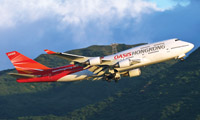 |
| Oasis Hong Kong Airlines: the long-haul LCC went into liquidation in 2008 after 18 months in service |
In six months, 24 airlines had closed or gone bankrupt. IATA forecasts for 2008 had changed from a profit of $7.6 billion to a loss of potentially $6.1 billion. “There is no fat left. To survive this crisis massive change is needed quickly,” said IATA director general, Giovanni Bisignani.
All airlines in the Asia-Pacific region were imposing fuel surcharges. Carriers shed jobs, in Qantas’ case 1,500 staff. The Australian airline froze plans to hire 1,200.
Many flights were cancelled – 7.1% in the final quarter of the year - and aircraft grounded.
Cathay Pacific CEO, Tony Tyler, refused to panic. “We will not take a ‘slash and burn’ approach to the problem. It’s important to preserve our network as Hong Kong’s home carrier. We aim to keep our team together … we need to work to maximise our revenue,” he said.
The recession was starting to show in the AAPA’s mid-year statistics. In July, passengers carried fell for the first time in six years. Meanwhile, freight traffic, already a sluggish market, started to seriously decline as world economies entered a downturn.
In addition to the economic woes, Thailand’s carriers took a heavy hit when political protests, including riots and the closure of airports by protesters, led to a slump in tourism. THAI’s bookings on international routes dropped by 10% in September, October and November and 15% on regional routes.
IATA expressed concern about the skills shortage in the industry. It said some 17,000 new pilots would need to be trained every year globally to meet the demands of the world fleet to 2020.
That was 3,000 to 3,500 per year more than the 2008 training capacity could accommodate. India and China alone would need 4,000 more pilots a year.
The shortages were not confined to pilots, said IATA. They also included maintenance engineers and IT professionals.
2009
The pages of Orient Aviation did not make pretty reading in 2009. The March issue was peppered with headlines such as SIA profit falls 43%, THAI may defer A380 deliveries, Korean Air’s losses balloon, ANA, JAL losses deepen on all traffic fronts, Qantas wants funds for new planes (after an interim profit decline of 66%).
The headline on our cover story was Cargo in Crisis. “It’s grim and its going to get grimmer,” as the world recession continues to bite, read the story. Only a year earlier, airlines were ordering new freighters or looking for conversion opportunities.
Cathay Pacific parked two freighters in the desert, SIA offered pilots up to 30 months unpaid leave and was looking to ground more aircraft. The carrier already had one parked in the desert. MASKargo, MAS’ cargo division, planned to reduce capacity by 30%.
In April, Qantas was preparing to offload 100 senior and middle managers as CEO, Alan Joyce, pushed through another round of restructuring. Since Joyce’s appointment in November 2008, 1,500 staff had been made redundant.
There was a shake-up at THAI in 2009. President, Capt. Apinan Sumanaseni, resigned citing disagreements with the board and health problems. His temporary successor, Wallop Bhukkanasut, revealed the airline’s survival was under threat. He blamed management complacency, the constraints of government ownership and political unrest in the country for the carrier’s problems.
Piyasvasti Amranand was eventually appointed president and said in no uncertain terms that he was going to do the job his way and would not welcome any board interference.
Air China paid $183 million to increase its holding in Cathay Pacific by 12.5% to 29.99%. Swire Pacific increased its stake in the carrier by 2% to 41.97%. Both Air China and Swire acquired their additional holdings from Citic Pacific, a Chinese conglomerate and long-time investor in Cathay.
JAL was experiencing a nightmare and the government was forced to intervene to keep it flying.
Its president, Haruka Nishimatsu, and some of his senior executives, were seen handing out leaflets outside a JAL sales office appealing to passers-by to fly on the airline.
Asia’s largest carrier relied on international traffic for more than half its business, but passenger numbers had fallen 25% in the previous 12 months. The airline was forecasting a full-year loss of nearly $700 million, but analysts thought it would be much higher.
To save costs, JAL was cutting unprofitable routes, lowering wages and shifting to smaller planes. The carrier also announced plans to eliminate up to 6,800 jobs and asked retirees and employees to accept a 40% cut in pensions.
In November, the Japanese government was forced to approve a $1.1 billion emergency loan to keep the airline flying. The Enterprise Turnaround Initiative Corporation of Japan was considering the best strategy for the restructuring of JAL.
At the 53rd AAPA Assembly of Presidents, in November, SIA CEO, Chew Choon Seng, said the association “needs China’s carriers on board.” In Orient Aviation’s launch issue 17 years earlier the organization was saying it wanted to attract Mainland airlines, but had so far failed to do so.
Chew said the AAPA would be more representative and reflective of the region’s strength and rising stature and have more influence in international aviation matters if it had members from China. It needed to renew its efforts, said Chew.
2010
In January, JAL filed for bankruptcy protection. With its shares as low as three yen (it delisted from the Tokyo Stock Exchange in February), JAL’s failure was said to be the biggest in post-war Japan of a non-financial firm. The airline was burdened with debts of $25.7 billion.
Major steps to be taken in the rehabilitation plan included:
* Slashing 15,700 of the JAL Group’s 47,000 jobs, one third of the workforce and double an earlier target.
* the reduction of group companies from 110 to 57.
* the retirement of all 37 of JAL’s B747-400s and 16 MD90s to be replaced by 50 small and regional aircraft.
* a further 31 routes to be cut, 17 of them international.
* more than 20 overseas offices to be closed.
AirAsia and Jetstar announced the world’s first LCC alliance. Their target was to accomplish bottom line savings of up to $250 million by such measures as joint fuel purchases, maintenance, sharing of spare parts and ground handling in Asian markets where both operate. Cost savings, they said, would be passed on to customers in the form of lower fares.
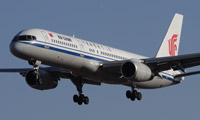 |
| Air China paid $183 million to increase its shareholding in Cathay Pacific to 29.99% |
Air China and Cathay Pacific agreed to establish a joint venture cargo airline using the Beijing carrier’s wholly-owned subsidiary, Air China Cargo (ACC). Air China would own 51%.
The carrier was the Mainland’s largest all-cargo airline with seven B747 freighters. Cathay agreed to sell four more freighters to ACC.
Garuda Indonesia became the first airline in the world to place immigration officers on its inbound flights to process visas and inspect passports. The move helped passengers avoid long queues at immigration desks on arrival.
There were signs of economic recovery during 2010 with Asia-Pacific carriers showing improved financial results for the first time in around three years. But as the region started to lead the world recovery there were fears of over-capacity in the market with airlines putting grounded jets back into service too quickly.
Another blow to airlines came in April when European air space was closed following the eruption of an Icelandic volcano. The AAPA estimated the region’s carriers lost $40 million a day in revenue during the flight bans.
SIA was the hardest hit with 25 flights a day into Europe. The carrier was said to have lost between $3.6 million and $7.3 million a day.
News that THAI had returned its best financial results in 18 months turned to dust in April when international and regional bookings collapsed following 60 days of violent political protests in Bangkok. In May, its load factor was just above 50%.
Eighty people were killed and more than 1,000 injured as the protesters called for new elections. Many countries in the region warned their citizens not to travel to Thailand.
Virgin Blue’s new boss, John Borghetti, sought board approval to change its name to Virgin Australia and restructure the carrier as a full service airline to attract larger numbers of corporate travellers.
In 2010 air freight was booming again. It grew three times faster than passenger traffic.
The Asia-Pacific led the world with a 37% surge in air freight in April, but some major hub cargo airports did even better. Taipei reported a 54% increase in air cargo, China’sv Shanghai Pudong airport a 46% rise and Hong Kong a 38% increase. The big question was: would it last?
Airbus chief operating officer customers, John Leahy, declared that the recession was over at the Farnborough Air Show in July. New aircraft orders worth $30 billion, a leap of $23 billion over the Paris Air Show 12 months earlier, was a clear sign that carriers were putting the global financial crisis behind them, he said.
Among those announcing new orders was Cathay Pacific, with a deal for 30 A350s and six B777s, worth $9.7 billion.
ANA announced it would launch Japan’s first low-cost carrier in the latter part of 2011.
Japan’s first low-fare domestic airline, Skymark Airlines, almost unknown outside Japan, shocked the aviation world when it signed an MoU with Airbus for four A380s with two options. Launched in 1998, it operated a fleet of 15 B737-800s.
2011
The Asia-Pacific was on top of the world – literally. The region had surpassed North America as the region with the most internal traffic. The largest airline in the world by market capitalization was Air China at $20 billion, followed by SIA ($14 billion), Cathay Pacific ($12 billion) and China Southern Airlines ($11 billion).
But more than this, as explained by the IATA director general, Giovanni Bisignni, was the fact that “rapidly developing markets are shifting the industry’s centre of gravity to the East”.
Aircraft manufacturers, engine makers, maintenance, repair and overhaul companies, pilot training and other aviation services were all being drawn to the Asia-Pacific.
However, airlines suffered a setback in March following the earthquake and tsunami in Japan. If that wasn’t enough the natural disaster led to radioactive leaks from a damaged nuclear power station, in Fukashima.
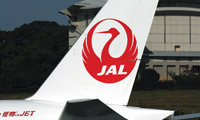 |
| Japan Airlines: emerged from bankruptcy protection in 2011 |
With travel into and out of Japan grinding to a near halt, JAL and ANA cut routes by up to 50%.
A month earlier, a much smaller earthquake had hit Christchurch in New Zealand.
Also in March, there was some good news for JAL. It emerged from bankruptcy proceedings, having completed its corporate reorganization with a one-time payment of $4.86 billion. What’s more it recorded a $2.3 billion operating profit in the 2010 financial year, three times more than its target and a turnaround from a $1.65 billion loss a year earlier.
Despite the political turmoil that had plagued Thailand in the previous two years, the THAI board approved plans for 26 new aircraft – six A380s, 12 A330-300s and eight B777-300ERs.
One of Indonesia’s major LCCs, Mandala Airlines, closed its doors in January in the face of mounting debts. Its management said the closure would be temporary.
AirAsia ordered 200 A320s with its new neo engine at the Paris Air Show, worth $18.5 billion. CEO Tony Fernandes hinted he could add another 100 to the fleet, which would take its total to around 500.
It was quite a show both for the neo and Asian carriers. Garuda Indonesia ordered 10 A320neos and 15 classic A320s for its LCC Citilink. Taiwan’s TransAsia Airways booked six A321neos and, shortly before the show opened, Cebu Pacific signed an MoU for 30 A321neos.
Qantas entered into a surprise 10-year alliance with Gulf giant, Emirates Airline, which meant the Australian carrier would cease all its flights to Europe through its Singapore hub, and switch to Dubai.
Emirates president, Tim Clark, described the deal as “seismic”. The deal still needed the approval of the Australian Competition and Consumer Commission
In August, PAL signed the biggest aircraft order in its history – 54 new jets worth $7 billion. It followed this a month later with an order for 10 A330-300s.
Qantas grounded its 108-plane fleet on October 29 leaving thousands of passengers stranded. The move came after unrest among pilot, maintenance, ground handling and catering unions led to multi-million dollar losses from delayed and cancelled flights.
The unions feared the airline was to be moved offshore to Asia. Qantas had announced a restructuring plan that included the launch of a new premier airline in either Singapore or Malaysia.
The Australian government demanded the parties solve their differences. Some flights were back in the air within 48 hours.
A landmark alliance was reached between Virgin Australia (formerly Virgin Blue) and SIA. Qantas Airways market domination was said to be on the line.
 |
| Virgin Australia CEO, John Borghetti: announced a landmark alliance with SIA in 2011 |
Said Virgin CEO John Borghetti: “Along with Virgin Australia’s alliances with Etihad, Delta and Air New Zealand it totally changes the dynamics for the Australian market, for the consumer as well as for the airlines. This will bring real competition to international and domestic markets.”
SIA announced it was going to launch an as yet unnamed medium to long-haul budget carrier. A few weeks later Scoot was unveiled.
Cathay Pacific CEO, Tony Tyler, succeeded Giovanni Bisignani as director general and CEO of IATA, a position the Italian had held for 10 years.
THAI announced it was going to launch a “lite premium” subsidiary airline, THAI Smile Air.
In October, the first of the long-delayed B787 Dreamliners was delivered to launch customer ANA.
Indonesia’s Lion Air made a world record aircraft order in November when it signed for 230 B737s (201 with the new MAX engine), and 29 B737-900NGs in a deal worth $21.7 billion.
2012
Malaysian-based, long-haul low-cost carrier, AirAsia X, ceased flights to Europe and India. The company said the services had become uneconomical because of high taxes and soaring fuel prices. It said it would open new routes and expand core markets in the Asia-Pacific.
There was a sense of déjà vu at MAS. The majority government-owned carrier was once again teetering on the edge of bankruptcy. In 2006, it was just three months from running out of funds when its saviour, ex-Shell oil executive, Idris Jala, was brought in to turn the airline around. Within two years it posted record profits.
Jala moved on and MAS was back on the financial edge having lost a record $839.4 million in 2011. Its new CEO, Ahmad Jauhari Yahya, admitted the company was in crisis and that more than 40% of its routes were loss makers. He had started a major network rationalization, he said.
But MAS was not the only Asia-Pacific carrier in trouble early last year. A number of the region’s major airlines were announcing massive losses and taking action. Qantas saw an 83% fall in its annual profit, with its long-haul international operations losing $200 million a year. The company introduced a restructuring plan that would cost 500 jobs in engineering and catering.
AirNZ, with a 61% drop in interim net profit, was discarding 441 jobs by July. SIA announced it was to trim its cargo capacity by 20% to cut costs. Its pilots were also asked to volunteer for unpaid leave for between one week and two years. Its net profit for 2011 slumped 69.2%
After a record 2010, Cathay Pacific’s profits fell 61% in 2011. The carrier, too, offered its pilots, along with cockpit crew at its subsidiary, Dragonair, unpaid voluntary leave. Cathay parked three B747-400s and three B747 freighters last year to cut costs.
The Hong Kong government gave in-principal approval for a third runway at the Chek Lap Kok airport. If finally approved, the $17.4 billion cost would be the largest single development in the city in monetary terms. A final decision is not expected until 2015 and building will take eight years.
After eight months, the share swap deal between AirAsia and MAS collapsed following opposition from unions. The deal had initially been hailed as a breakthrough and was seen as a major step towards stemming MAS’s losses.
Jetstar Hong Kong, a $198 million joint venture between Qantas and China Eastern Airlines applied to the Hong Kong aviation authorities for an air operator’s licence (AOC).
2013
China’s only privately-owned carrier, Spring Airlines, expanded its services between the Mainland and Hong Kong. The carrier is looking to launch an LCC subsidiary in Hong Kong.
SIA announced a “difficult” decision to bring forward the release of 76 pilots employed on fixed-term contracts. The carrier said the economic downturn of 2009-2010 had resulted in excess capacity and slower than expected growth.
The B787 Dreamliner fleet was grounded following problems with its high tech lithium-ion batteries on board an ANA and a JAL aircraft. ANA had 25 of its 55 B787s on order in service.
An Orient Aviation survey of B787 customers in the Asia-Pacific revealed the Dreamliner retained their support. The plane was given the green light to return to service by the Japan Civil Aviation Board and the U.S. Federal Aviation Administration in late April.
Indonesian carrier, Batavia, went bankrupt in February. In mid-2012, AirAsia announced plans to buy into the carrier, but changed its mind after conducting due diligence on the company.
There was a sharp intake of breath in March when Indonesia’s Lion Air broke its own world record for aircraft orders. In 2011, it stunned the aviation world when it ordered 230 B737s. But this time Airbus was the beneficiary when Lion signed for 234 A320s worth $24 billion. Has the airline bitten off more than it can chew, analysts were asking?
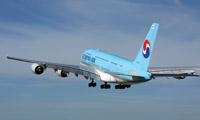 |
| Korean Air: bought a 44% stake in Czech Airlines this year |
Three years after filing for bankruptcy protection, the new-look, lean JAL was announcing its second record annual profit in a row. Rival ANA also recorded a record profit for the financial year to March 31.
Another carrier to turn its fortunes around in recent years, Garuda Indonesia, reported a 72.6% increase in profit to $145.4 million.
Virgin Australia and its CEO, former Qantas executive, John Borghetti, upped the anti on its major rival when the Australian Competition and Consumer Commission gave the go-ahead for Virgin to purchase 60% of Tiger Airways Australia for $35.9 million.
The next day, Qantas was hit by a double Virgin whammy when it was announced that SIA was to invest $129.4 million in Virgin Australia, increasing its stake from 10% to 19.9%.
Regional carrier, Hong Kong Express, took the industry by surprise when it announced in June that it was going to re-launch in October as a low-cost carrier. Nobody was more surprised than Jetstar Hong Kong, which is still awaiting a decision on its controversial application for an air operator’s certificate (See regional round-up, page 54).
Cathay Pacific has been vocal in its opposition to Jetstar Hong Kong which, it claims, is essentially owned and managed outside the Special Administrative Region, in Sydney, contravening Hong Kong’s Basic Law.
Jetstar Hong Kong, a joint venture between Qantas Airways and China Eastern Airlines, took on a Hong Kong partner, Shun Tak, to strengthen its case and appointed its chief executive, Pansy Ho, as chairman. Another Hong Konger, Edward Lau, is CEO of the carrier, which has been trying to establish itself in the city for 18 months.
AirAsia chief, Tony Fernandes, was vowing to return to Japan following the failure of its joint venture with ANA, AirAsia Japan. The carrier’s last flight is on October 31, but Fernandes said: “We have not given up the dream of changing air travel in Japan and look forward to returning to the market.”
The two-year-old joint venture faced many challenges after its launch. “Issues stemmed from a fundamental difference of opinion between its shareholders and how the business should be managed – from cost management to the location of domestic business operations,” said Fernandes.
In August, China pushed back the launch of the first flight of its C919 regional jet from 2014 to the end of 2015.
PAL denied reports that it was abandoning its domestic market in favour of offshore expansion, but explained that, with the exception of three ports from which PAL international services operate, its domestic services were being “realigned” to the national carrier’s low-cost subsidiary, PAL Express.
Indonesia’s domestic carrier, Merpati Nusantara, was put up for sale after five years of heavy losses, but even its government owners gave it little hope of finding a buyer. If none came forward by September it was to be closed down.
SIA was busy at the Paris Air Show where orders for 30 B787-10s and 30 A350-900s were announced. The Singapore carrier also took options on another 20 A350s.
Also at Paris, KAL signed a deal for five B747-8s and announced it intended to buy six B777-300ERs. Hong Kong Aviation Capital ordered 60 of the A320neo family.